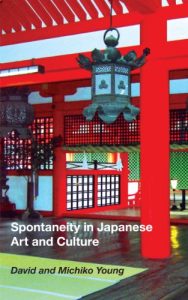There are two major aesthetic traditions in Japan --what might be called a Restrained Tradition and an Exuberant Tradition. In phenomena as diverse as art, architecture, gardens, clothing, the objects people use, and interior decor, the influence of both traditions can be seen. Instead of competing with each other, the authors view these two traditions as opposite ends of a continuum on which people move back and forth between restraint and exuberance in the course of their daily lives, depending upon the circumstances. This movement is not arbitrary but governed by principles that go to the core of Japanese culture. The goal of this book is to use a socio-scientific approach to provide a better understanding of some of these basic principles, illustrated with around 200 colour photographs.
An important theme throughout the book is that Japan is a highly structured society in which people value but seldom have the opportunity to express spontaneity in art and in everyday life. True spontaneity is achieved only when an art form is totally mastered so that it flows freely without thought. This kind of spontaneity is seen in children's art, folk art, much of the art of Zen Buddhism, or absorption in a hobby, sport, or music. Most of the time, individuals seek escape from the restrictions of everyday life in fantasy, as evidenced by the popularity of manga and the great diversity of after-hours entertainment in Japan. Sometimes, however, they turn to the values incorporated into the concept of shibsua --an important aesthetic concept in Japan.
Shibusa attempts to find a compromise between spontaneity and a high level of taste. Shibui aesthetics, which favour values such as austerity, asymmetry, naturalness, and subdued colours, is toward the restrained end of the Restraint-Exuberance Continuum. At the same time, however, it emphasizes what we have called "spontaneity of effect" --creating an atmosphere that appears to be relaxed and spontaneous, even if it is not truly spontaneous. The concept of shibusa is a major contribution of Japan to the world.
David is a retired anthropologist; his wife Michiko was raised and educated in Japan. Together they have co-authored three books on Japanese art and culture. For further information, see their website: www.CoastalTidesPress.com.
An important theme throughout the book is that Japan is a highly structured society in which people value but seldom have the opportunity to express spontaneity in art and in everyday life. True spontaneity is achieved only when an art form is totally mastered so that it flows freely without thought. This kind of spontaneity is seen in children's art, folk art, much of the art of Zen Buddhism, or absorption in a hobby, sport, or music. Most of the time, individuals seek escape from the restrictions of everyday life in fantasy, as evidenced by the popularity of manga and the great diversity of after-hours entertainment in Japan. Sometimes, however, they turn to the values incorporated into the concept of shibsua --an important aesthetic concept in Japan.
Shibusa attempts to find a compromise between spontaneity and a high level of taste. Shibui aesthetics, which favour values such as austerity, asymmetry, naturalness, and subdued colours, is toward the restrained end of the Restraint-Exuberance Continuum. At the same time, however, it emphasizes what we have called "spontaneity of effect" --creating an atmosphere that appears to be relaxed and spontaneous, even if it is not truly spontaneous. The concept of shibusa is a major contribution of Japan to the world.
David is a retired anthropologist; his wife Michiko was raised and educated in Japan. Together they have co-authored three books on Japanese art and culture. For further information, see their website: www.CoastalTidesPress.com.






